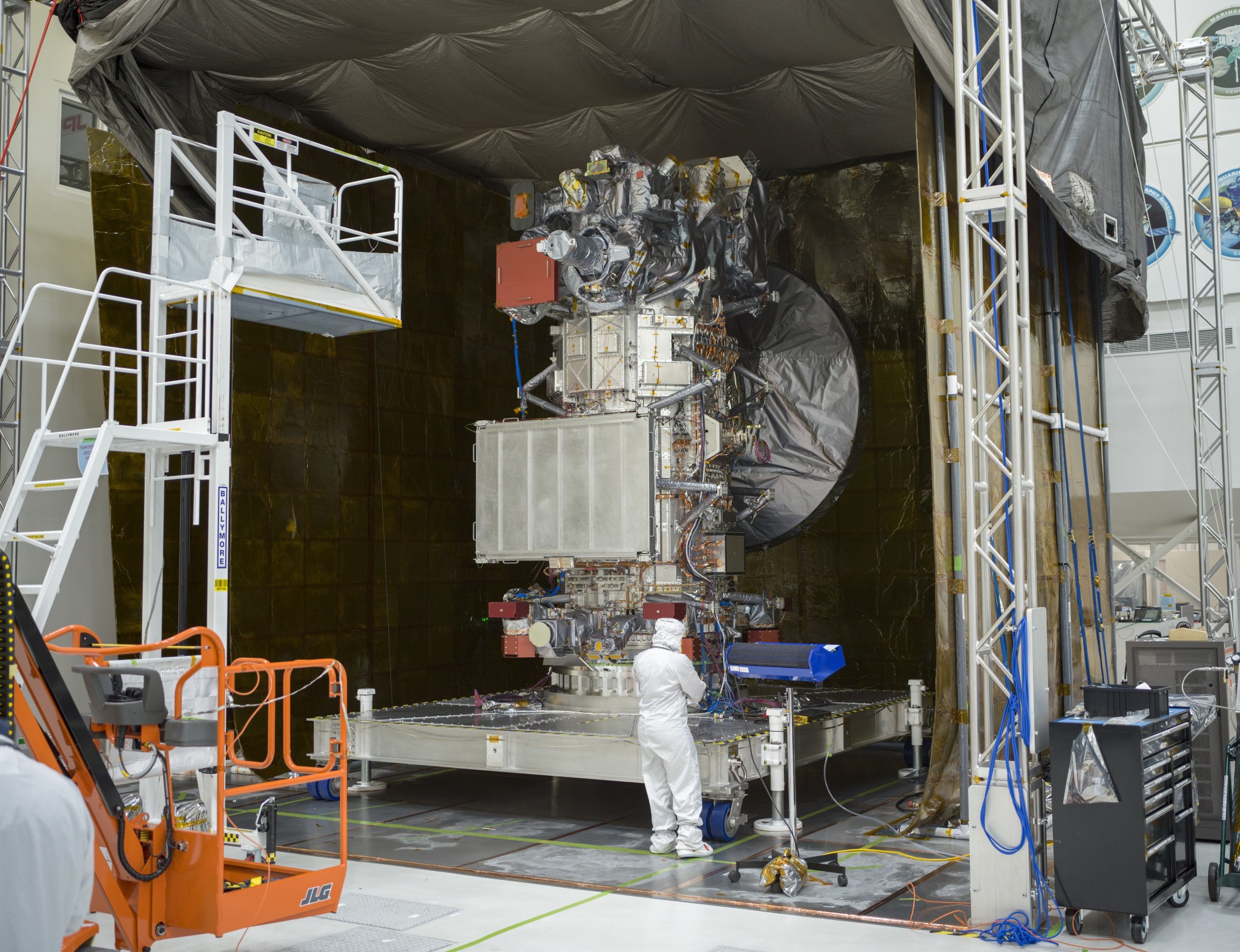
The science performed by the complex suite of instruments recently added to the spacecraft will reveal whether Jupiter's moon Europa has conditions that could support life.
With less than nine months remaining in the countdown to launch, NASA's Europa Clipper mission has passed a major milestone: Its science instruments have been added to the massive spacecraft, which is being assembled at the agency's Jet Propulsion Laboratory in Southern California.
Set to launch from Kennedy Space Center in Florida in October, the spacecraft will head to Jupiter's ice-encased moon Europa, where a salty ocean beneath the frozen surface may hold conditions suitable for life. Europa Clipper won't be landing; rather, after arriving at the Jupiter system in 2030, the spacecraft will orbit Jupiter for four years, performing 49 flybys of Europa and using its powerful suite of nine science instruments to investigate the moon's potential as a habitable environment.
"The instruments work together hand in hand to answer our most pressing questions about Europa," said JPL's Robert Pappalardo, the mission's project scientist. "We will learn what makes Europa tick, from its core and rocky interior to its ocean and ice shell to its very thin atmosphere and the surrounding space environment."
The hallmark of Europa Clipper's science investigation is how all of the instruments will work in sync while collecting data to accomplish the mission's science objectives. During each flyby, the fully array of instruments will gather measurements and images that will be layered together to paint the full picture of Europa.
"The science is better if we obtain the observations at the same time," Pappalardo said. "What we're striving for is integration, so that at any point we are using all the instruments to study Europa at once and there is no need to have to trade off among them."






